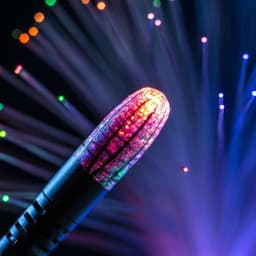Introduction
Dual-modality PA/ultrasound (US) imaging combines the advantages of both modalities: PA imaging provides high-contrast blood vessel images, blood oxygen levels, and biomarker distribution, while US imaging offers blood perfusion, tissue morphology, and elasticity. The shared image recording system allows for interleaved dual-contrast scanning, improving spatial and temporal registration. However, the trade-off between spatial resolution and penetration depth limits high-resolution deep tissue imaging. Super-resolution localization techniques, such as ULM, address this by breaking the acoustic diffraction limit, achieving up to a ten-fold resolution improvement. ULM typically requires a low concentration of microbubbles, leading to long acquisition times (tens to hundreds of seconds per frame), hindering real-time dual PA/ULM imaging. This study aims to develop a fast interleaved PA/ULM imaging scheme by accelerating ULM using SC optimization, thereby enabling high-speed, high-resolution in vivo imaging with minimal motion artifacts.
Literature Review
Existing dual-modality PA/US imaging systems offer versatile capabilities but struggle with achieving high resolution in deep tissues. Super-resolution techniques like ULM offer a potential solution, but their slow acquisition times, often requiring thousands of US frames per ULM frame, limit their practicality for real-time applications, particularly when integrated with PA imaging. Compressed sensing methods have been proposed to accelerate ULM by allowing for higher microbubble concentrations, but these often involve computationally expensive patch-stitch image processing. Deep learning-based methods require extensive training datasets. Sparsity-based methods offer an alternative, but haven't yet demonstrated super-resolution velocity mapping.
Methodology
This study presents a fast interleaved PA/ULM imaging scheme accelerated by SC optimization using FISTA (fast iterative shrinkage-thresholding algorithm). A 15 MHz linear array US transducer combined with a bifurcated fiber bundle is used to acquire both PA and ultrafast US data. The interleaved sequence acquires PA images (0.1-0.5 sec per frame) and fast ULM images (0.5-1.5 sec per frame) alternately. Spectral unmixing is applied to multi-wavelength PA images, and sparsity recovery (SC optimization) is applied to US images to generate super-resolution images. The SC optimization uses FISTA to improve computational efficiency, and its performance is compared with other sparsity recovery methods (CVX, L1-homotopy). Microbubble localization efficiency of SC optimization is evaluated using synthetic and in vivo US microbubble images. In vivo studies involved imaging mouse lymph nodes (after ICG dye injection) and mouse kidneys. A motion correction algorithm, using rigid motion modeling and separating physiological movements into lateral, axial, elevational, and rotational components, is applied to the kidney images. In the oxygen challenge experiment, the mouse inhaled 100%, 3%, and 20% oxygen alternately, and the corresponding changes in blood velocity and hemoglobin oxygenation were imaged.
Key Findings
The SC optimization method significantly accelerates ULM acquisition. In synthetic data, it recovers up to 37 times more microbubbles than the conventional PSF-CC method. In vivo, it achieves a 28-fold improvement in acquisition time. The improved speed enables interleaved PA/ULM imaging, minimizing motion artifacts and improving spatial-temporal registration. 3D dual-contrast imaging of a mouse lymph node successfully visualizes both the ICG-labeled lymph node and the surrounding microvasculature. In vivo dual PA/fast ULM imaging of a mouse kidney demonstrates co-registered time-lapse images of super-resolved renal microvascular velocity distribution and kidney tissue oxygenation level. The oxygen challenge experiment reveals a positive correlation between blood flow speed and hemoglobin oxygenation. Fourier ring correlation analysis shows the resolution of SC-ULM is comparable to PSF-CC ULM after sufficient acquisition time, while SC-ULM significantly reduces acquisition time.
Discussion
The developed dual PA/SC-ULM imaging technique offers a non-invasive, portable, and cost-effective method for super-resolution vascular and tissue physiological imaging in vivo. The significant speed improvement of SC-ULM addresses a major limitation of traditional ULM, enabling 3D scanning and time-lapse imaging with reduced motion artifacts and improved spatial and temporal registration. The successful application to both lymph node and kidney imaging demonstrates its versatility and potential for various clinical applications. The positive correlation observed between blood flow speed and hemoglobin oxygenation during the oxygen challenge experiment validates the technique's ability to monitor renal oxygenation and hemodynamics simultaneously.
Conclusion
This study introduces a novel dual PA/super-resolution US imaging technique using SC-accelerated ULM, achieving significantly faster acquisition times compared to conventional methods. Its successful in vivo applications in lymph node and kidney imaging demonstrate its potential for various biomedical applications. Future work could focus on hardware and software improvements to further enhance the speed and resolution of the system, potentially enabling real-time imaging capabilities.
Limitations
While the SC-ULM method significantly improves imaging speed, it may sacrifice some resolution at very high microbubble densities due to increased localization errors. The motion correction algorithm assumes rigid body motion, which might not perfectly capture complex tissue movements. Further research could explore more sophisticated motion correction techniques to improve image quality, especially for long acquisition times.
Related Publications
Explore these studies to deepen your understanding of the subject.







